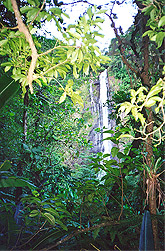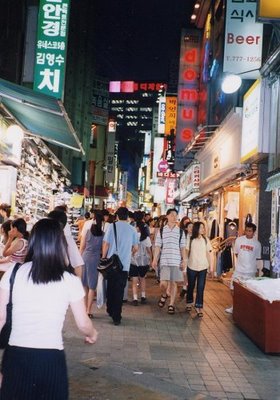Donner les mercis autour du monde
 For those who don't know French - the title of today's post is "Give thanks around the world."
For those who don't know French - the title of today's post is "Give thanks around the world."
The concept behind the US of A's Thanksgiving ceremony celebration is similar to many around the world. Such as the August Moon Festival in China, Tet Trung Thu in Vietnam, Succoth in Judaism, Kwanzaa in Africa, Pongal in India and Chusok in Korea. The only difference in the festivals is date, rituals and customs - but the idea behind it remains the same, to thank the creator for a huge andfruitful harvest.
So here are just a few Thanksgiving celebrations from around the world and now you can say you learned something today: In China- The Chinese celebrate August Moon festival that falls on the 15th day of 8th lunar month of their calendar. Chinese believe that the moon is roundest and brightest on this day. Below the heavenly moonlight, lovers speak out their heart to each other. It is also known as Women Festival. Conventionally women are considered similes to warm and compassionate virtues and have the gift of fertility, just like Mother Earth. Unlike the famous pumpkin pie, the Chinese delicacies consist of moon-cake. Friends and relatives convey their regard to each other by gifting moon cake.
In China- The Chinese celebrate August Moon festival that falls on the 15th day of 8th lunar month of their calendar. Chinese believe that the moon is roundest and brightest on this day. Below the heavenly moonlight, lovers speak out their heart to each other. It is also known as Women Festival. Conventionally women are considered similes to warm and compassionate virtues and have the gift of fertility, just like Mother Earth. Unlike the famous pumpkin pie, the Chinese delicacies consist of moon-cake. Friends and relatives convey their regard to each other by gifting moon cake. In Rome - The Roman harvest festival known as Cerelia was celebrated in the honor of the deity Ceres (Goddess of Corn). Their festival commenced on October 4th and it was a custom to first produced fruits, grains and animals to the Goddess. Music, parades and sports extended the glee of the ceremony.
In Rome - The Roman harvest festival known as Cerelia was celebrated in the honor of the deity Ceres (Goddess of Corn). Their festival commenced on October 4th and it was a custom to first produced fruits, grains and animals to the Goddess. Music, parades and sports extended the glee of the ceremony. In Brazil- The Brazilian thanksgiving is quite contemporary compared to American thanksgiving. When the Ambassador of Brazil visited U.S. at the invitation of National Cathedral of Washington, D.C., he was enamored by the concept and brought it to his homeland. In southern Brazil, it is a sort of expressing gratitude to Almighty for an enormous harvest. Though acclaimed for its Carnival celebrations they cannot be undermined in other festivities.
In Brazil- The Brazilian thanksgiving is quite contemporary compared to American thanksgiving. When the Ambassador of Brazil visited U.S. at the invitation of National Cathedral of Washington, D.C., he was enamored by the concept and brought it to his homeland. In southern Brazil, it is a sort of expressing gratitude to Almighty for an enormous harvest. Though acclaimed for its Carnival celebrations they cannot be undermined in other festivities. In Korea - The celebration falls on 15th of August, which is known as Chu-Sok (meaning "fall evening"). It begins on 14th night and continues for three days. Koreans make a dish called 'Songpyon' unique for that occasion consisting of rice, beans, sesame seeds and chestnuts. Before having the food, the family gathers beneath the moonlight, in remembrance of their ancestors and forefathers. The children dress in long-prescribed dress dancing in circle with an inherent desire of their blessing.
In Korea - The celebration falls on 15th of August, which is known as Chu-Sok (meaning "fall evening"). It begins on 14th night and continues for three days. Koreans make a dish called 'Songpyon' unique for that occasion consisting of rice, beans, sesame seeds and chestnuts. Before having the food, the family gathers beneath the moonlight, in remembrance of their ancestors and forefathers. The children dress in long-prescribed dress dancing in circle with an inherent desire of their blessing.


No comments:
Post a Comment